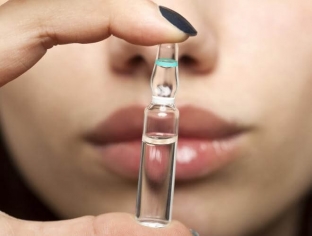It is amazing how many changes throughout the existence of mankind have experienced the concept of "beautiful appearance". The standards of beauty have changed and continue to change almost every new decade, but if before a beautiful person could only be born, then, at the present time, one can easily become one, and modern aesthetic medicine is the best assistant in this matter. But, as you know, you need to create your future, be sure to remember your past. In today's article, estet-portal.com raises a fascinating topic: the evolution of injectable facial contouring. It is contour plastic that is one of the most sought-after aesthetic procedures, and how did she take her first steps, and what did she come to today – find out now.
Beginning of formation: why injection facial contouring was invented
So, why was injection facial contouring invented? And at the very beginning of the existence of this technique, when it was not even called contour plastic, and at the present moment, indications for its use were and are any violations of the skin relief of the "minus-tissue" type, that is , the presence of wrinkles, folds, atrophic scars and depression of the skin, as well as the need for correction of the lips, cheekbones, nose and chin.
Contour plasty involves the use of special injectable preparations-microimplants that compensate for the lack of tissues.
This is how effective injection correction of facial contours is carried out.
Injection facial contouring:
- First attempts at injectable facial contouring;
- development of injection facial contouring in the 20th century;
- real injectable facial contouring.
First attempts at injectable facial contouring
The first attempts at injectable facial contouring were made back in the 19th century by the German doctor Neuber. In those distant times, a progressive specialist made the first attempts at lipofilling: by injection, he took drops of fat from patients in those areas where there was enough of it, and injected it into areas of the face that required correction after surgical interventions and various injuries. A few decades later, in 1902, another German doctor, Gersuni, first tried to use a foreign material to correct soft tissue defects. With the help of paraffin injections into the scrotum, the specialist made up for the lack of tissue after removal of the testicle. But since the introduction of paraffin into the skin was complicated by the formation of fibrous capsules around it, specialists began to search for a more suitable alloplastic material for contouring.
See also: "Face contouring, how to prevent side effects".
Development of injection facial contouring in the 20th century
In 1940, researchers first started talking about silicone gel as a serious nominee for the role of a suitable filler. For some time, this particular material was widely used to correct soft tissue defects, but due to serious complications, in 1992 it was banned for use in the United States and many European countries. Fortunately, at that time there were already several alternatives:
- bovine collagen filler was developed in the 1970s;
- in the 80s, materials appeared that stimulated the synthesis of its own collagen in the skin, and a technology was also developed for extracting collagen from adipose tissue removed during liposuction;
- in 1995, the revolutionary filler based on hyaluronic acid.

Real injectable facial contouring
Today, injection facial contouring, one might say, has reached the peak of its development. In cosmetology today, several types of effective fillers or fillers are used at once, which are selected individually for each patient. These may include collagen-containing fillers, popular hyaluronic acid or calcium hydroxyapatite fillers, PLLA and PMMA fillers, as well as the patient's own fat cells, and in some cases highly purified silicone oil. .
All modern preparations for contour plastics are united by a logical and simple principle – they must provide additional volume in places where it is not enough.
Injection contouring has progressively evolved in less than a hundred and fifty years, and today every person has the opportunity, with the help of simple injections, to make their face much younger and more attractive. But science does not stand still, and we look forward to an even more revolutionary turn in the development of aesthetic medicine. Who knows, perhaps a startling discovery will take place tomorrow? Stay tuned to estet-portal.com to be the first to know the latest news.
You may also be interested in: "The most complete classification of fillers in cosmetology".







Add a comment